Auctions
Phillips’s Contemporary Art Sale Fetched a Middling $27 Million, Led by a Shocking Six-Figure Price for Young Star Amoako Boafo
The sale total was down a considerable 43 percent from last year.
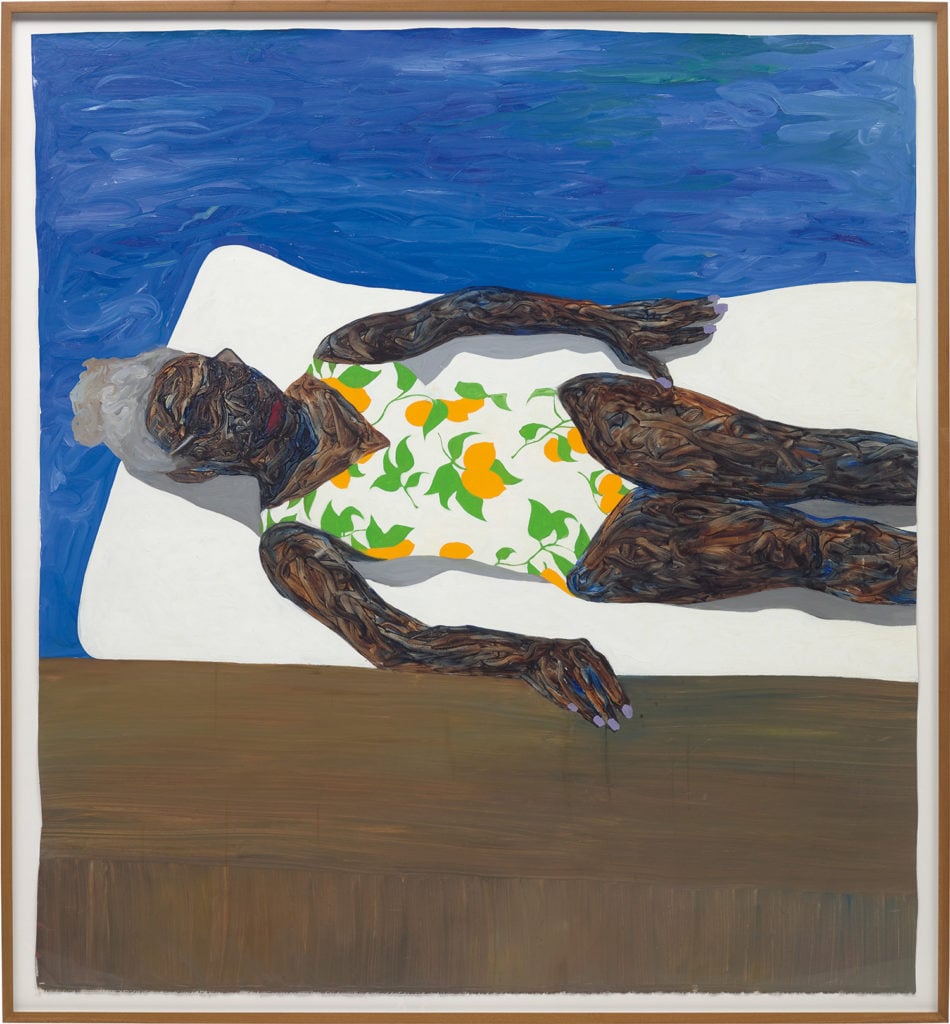
The sale total was down a considerable 43 percent from last year.

Colin Gleadell

Phillips rounded out London’s winter contemporary art evening sales on Thursday night with a passable £20.7 million ($27 million) auction that barely scraped its low estimate of £18.2 million ($23.7 million). (As always, final prices include the buyer’s premium; presale estimates do not.)
Although the event was reasonably well attended, the sale total (which had a high estimate of £25.5 million, or $33.3 million) was down a considerable 43 percent from last year, even though it reached a higher total than in previous winter sales in 2015 and 2017.
Of the 41 lots in the catalogue, four were unsold by the end of the night and three were withdrawn before the sale even began.
Notable in both categories was the artist known as KAWS, whose prices have rapidly escalated as of late on the back of Asian demand. But the extraordinary KAWS market appears to have been reined in for the moment, and not before time, some might say.
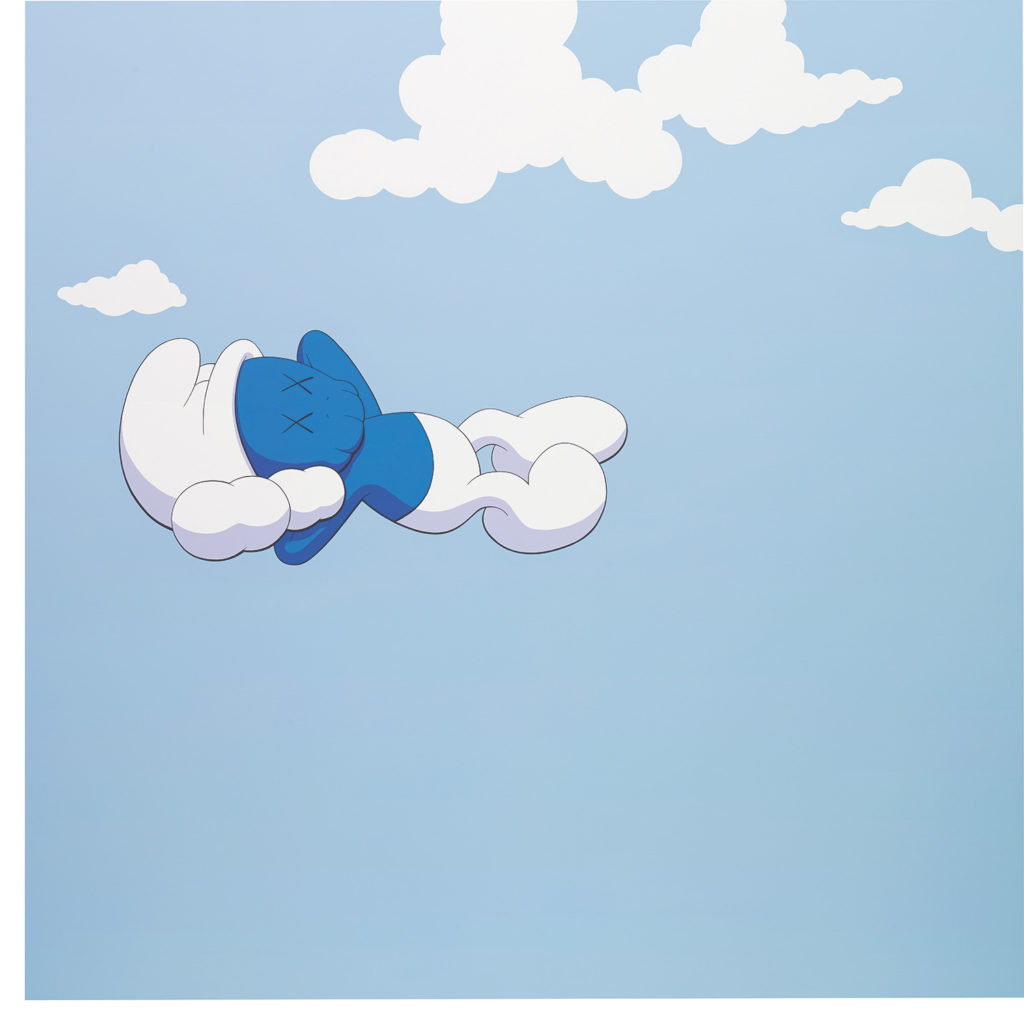
KAWS, FAR AWAY FRIENDS (2009). Courtesy of Phillips.
On Tuesday night at Sotheby’s, one guaranteed KAWS sculpture failed to produce any upside for the guarantor. Then, at Phillips on Thursday, another sculpture, titled Final Days, was withdrawn (it was estimated at £700,000–£900,000, or $913,042–$117,391); a painting titled On Time (estimated at £300,000–£400,000, or $391,303–$521,738) failed to sell; and another picture, the blissful FAR AWAY FRIENDS, sold on only a single bid—and for only £900,000 ($117,391), below its estimate.
Phillips had secured third-party guarantors for most of its top-selling lots, but the majority of those big-ticket items appeared to sell to those backers—and without much competition. These might include Ed Ruscha’s awesome landscape God Knows Where (estimated at £3.4 million, or $4.4 million); a 1981 Keith Haring painted tarpaulin (£3.2 million, or $4.2 million); and a Damien Hirst medicine cabinet, Bodies, from 1989 (£1.4 million, or $1.8 million).
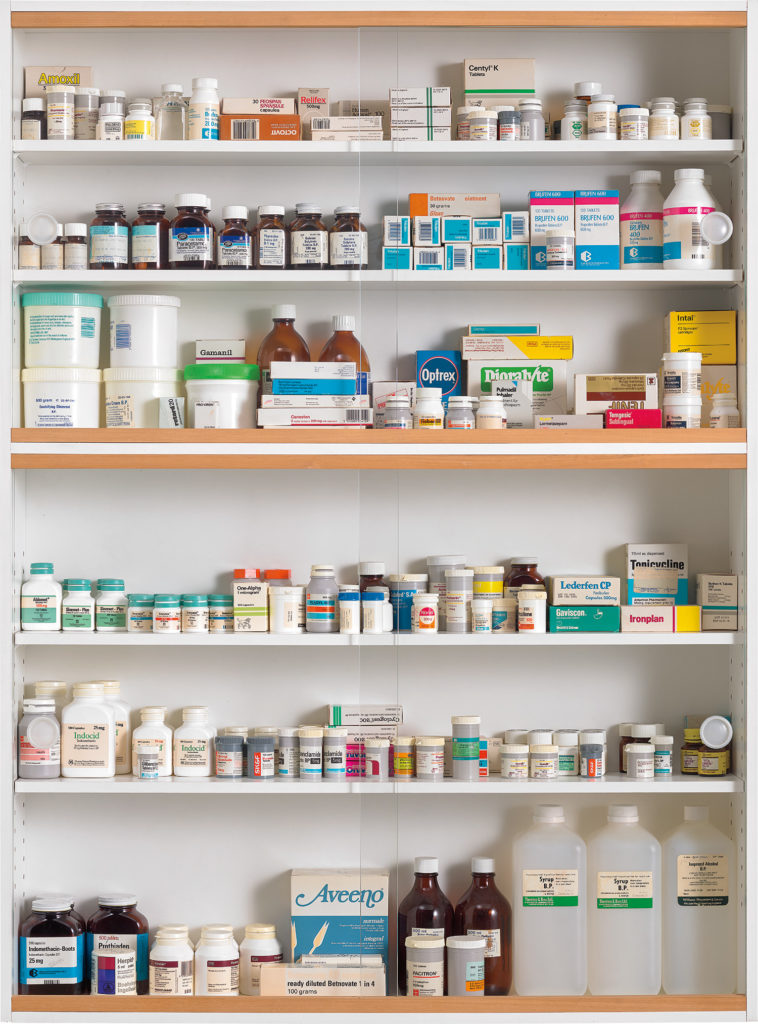
Damien Hirst, Bodies (1989). Courtesy of Phillips.
The cabinet came from the collection of financial trader Robert Tibbles, who bought it from the artist’s degree show in 1989 for £600. Tonight, it set a record for a Hirst medicine cabinet when it sold for £1.4 million ($1.8 million), even though there was no other bidding. Such was the situation for Phillips, which had to compete with Sotheby’s and Christie’s for the £4 million Tibbles collection, and had to quote higher than they may have preferred.
Also from the Tibbles collection was an early Hirst spot painting, Antipyrylazo III, which enjoyed slightly more competition, selling within estimate for £1.3 million ($1.7 million). But that was still several bids short of the top prices for the artist’s spot paintings, which were set in the heyday of the Hirst market in 2007–08.
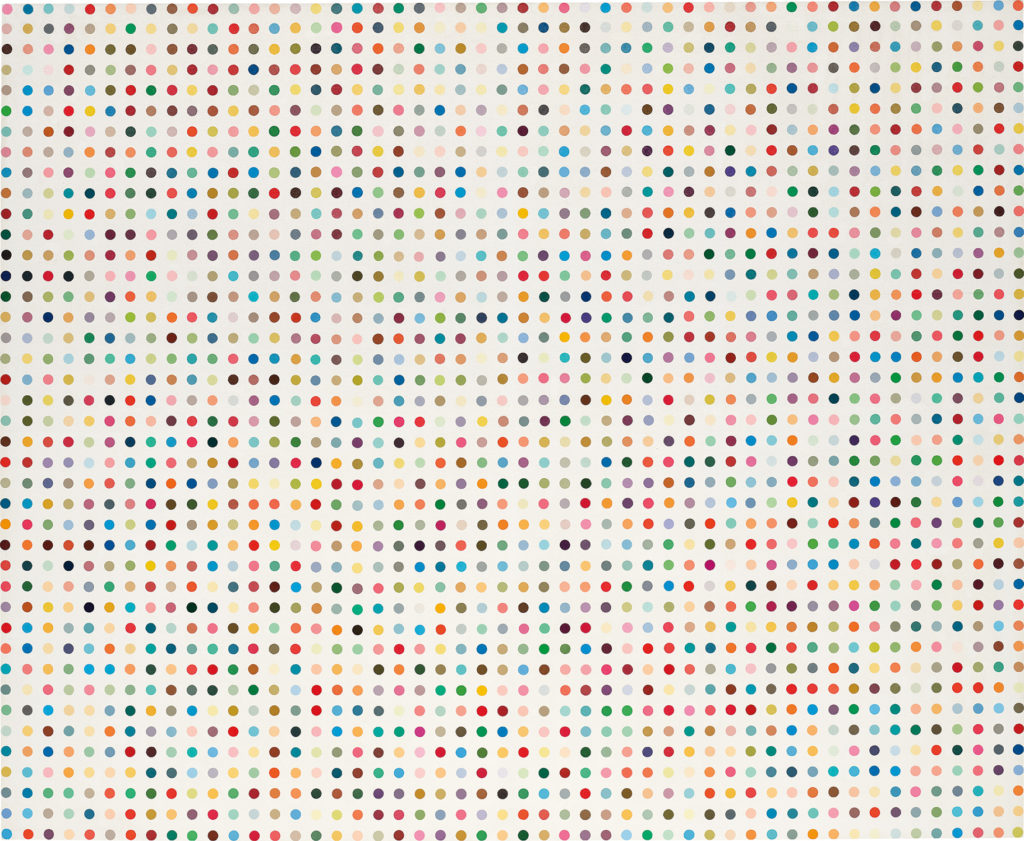
Damien Hirst, Antipyrylazo III (1994). Courtesy of Phillips.
The remainder of the Tibbles collection, which is focused on YBA art, included mid-estimate prices for early Hirst spin and butterfly paintings and a large picture by YBA guru Michael Craig-Martin (now represented by Gagosian). The painting, titled Full, sold above estimate for £162,500 ($211,956)—just short of the £175,000 record set for a work by Craig-Martin in the George Michael collection sale at Christie’s last year. Full is probably the better painting, but then Tibbles isn’t George Michael.
Bringing up the rear of the Tibbles collection was Magnolia Door One by Gary Hume, which was chased by London dealer Offer Waterman before selling above estimate for £40,000 ($52,173). A lone survivor from a series of door paintings by Hume on which the gloss paint cracked beyond repair, it may turn out to have been a bargain. Overall, the Tibbles collection was a test from which the YBA market emerged satisfactorily, considering it has not yet entered the realms of historic significance, and in light of the fact that this kind of conceptually based art is not currently in fashion.
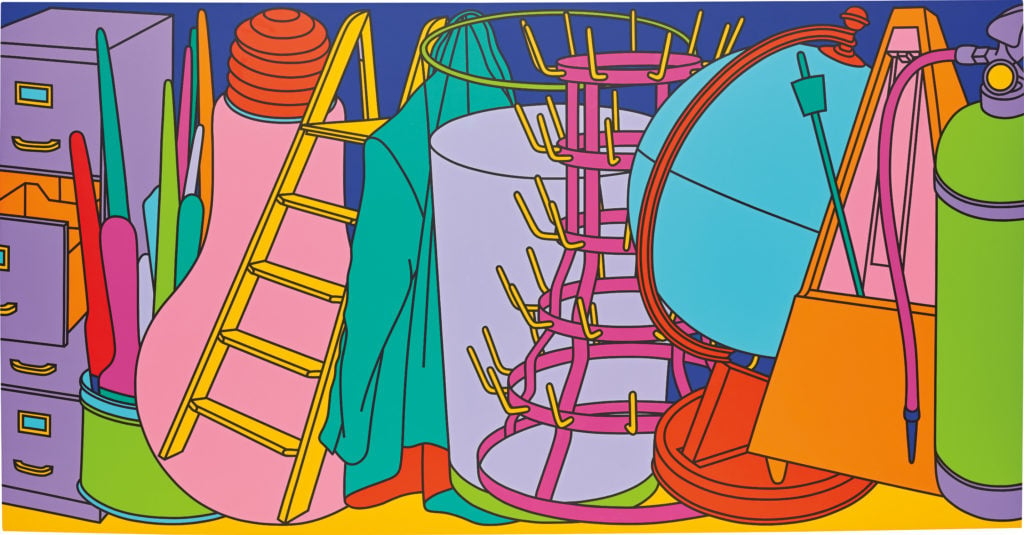
Michael Craig-Martin’s Full (2000) sold at Phillips on Thursday night for £162,500 ($211,956). Courtesy of Phillips.
What is in fashion was represented in the early lots of the sale, and indeed the very first painting in the auction was by Ghanaian-born artist Amoako Boafo. The Lemon Bathing Suit, a large, colorful figurative painting by the young artist, was reportedly consigned by the Los Angeles dealer and collector Stefan Simchowitz, and it sold—stunningly—for a benchmark £675,000 ($881,432) against a £30,000 to £50,000 estimate ($39,130 to $65,217).
That estimate was based on a sell-out display by Chicago dealer Mariane Ibrahim at Art Basel Miami Beach, where paintings were priced between $15,000 and $45,000. But clearly, speculative elements in the market decided to send Boafo’s prices into orbit.
The Boafo was swiftly followed by another hot young artist, Julie Curtiss, whose Four Buns was chased by London dealer Omer Tiroche before selling to an Asian phone bidder on the high estimate for £137,500 ($179,347). Separately, a new record of £435,000 was set for a work by Tschbalala Self for her sewn fabric, human-haired, stiletto-heeled Princess, from 2017.
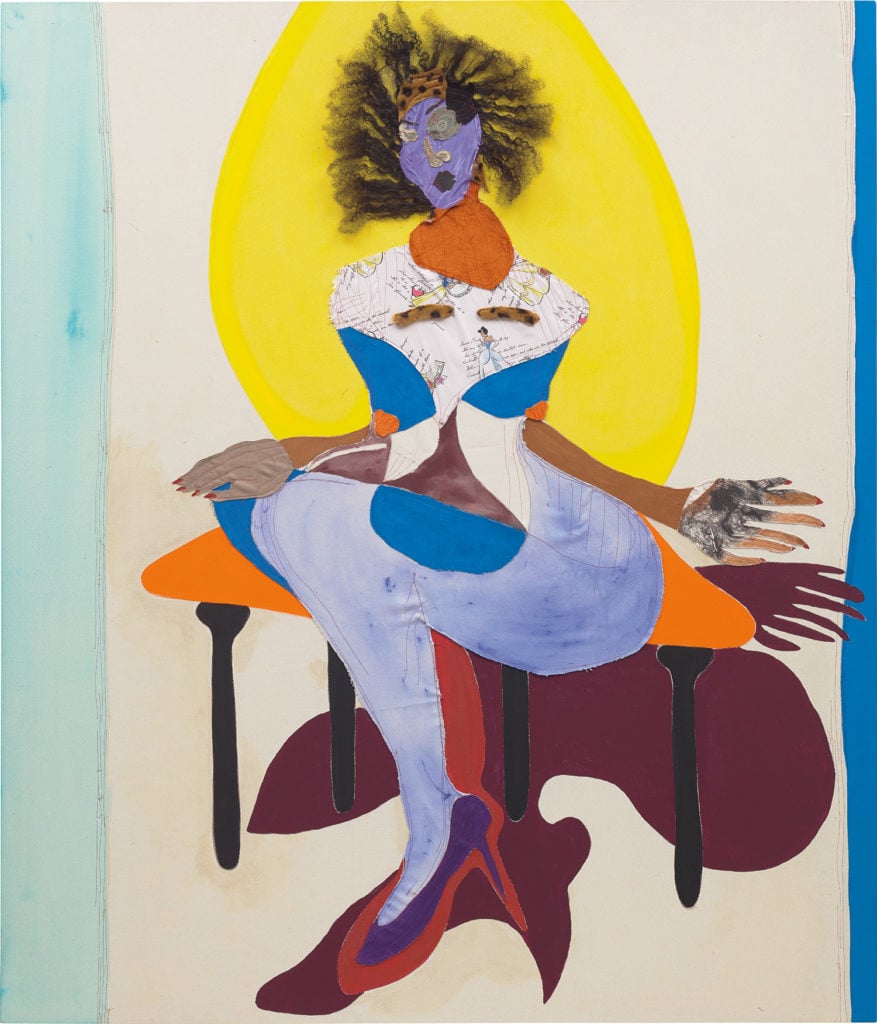
Tschabalala Self, Princess (2017). Courtesy of Phillips.
A fashionable opening quartet of lots was completed by a large, colorful abstract canvas, Neanderthal Jeans, by Eddie Martinez, whose work has been selling well all week. The buyer this time, at a top-estimate £375,000 ($489,129), was Russian art specialist and dealer James Butterwick, who was also active for a client at Sotheby’s on Tuesday.
Among the other dealers buying (and there weren’t many tonight) were reps from the Levy Gorvy gallery, which snapped up a 1990 Gunther Forg work below estimate for £411,000 ($536,085). Forg’s prices have been rising since his death in 2013, and this painting had last sold at auction in 2006 for £66,000 ($86,086 in today’s dollars).